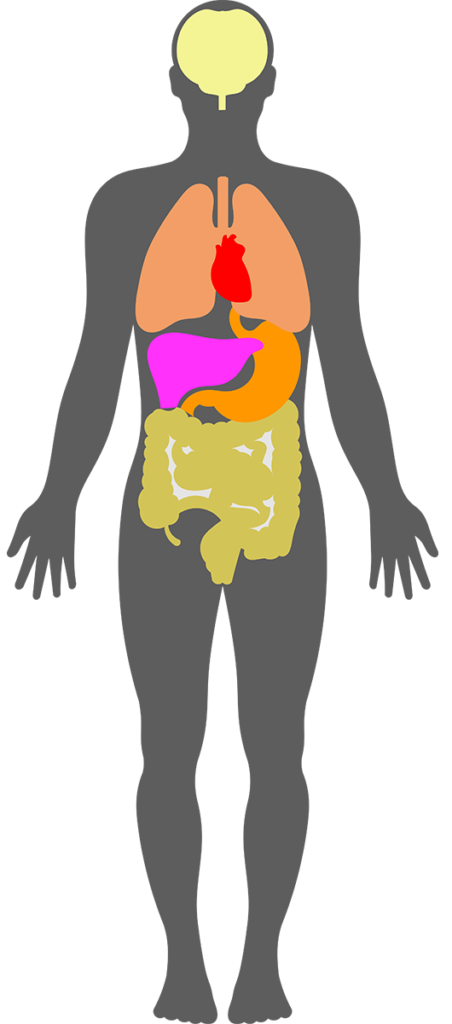SLEEP
Here you will find all the fundamentals needed for setting up your longevity sleep routine.
WHAT IS SLEEP
Sleep is a natural, reversible state of reduced consciousness and activity, essential for physical and mental restoration. It includes two main stages: NREM and REM. Sleep is crucial for physical and mental recovery, brain function, immune support, and overall health.
SLEEP PHASES
NREM
A phase of sleep characterized by deep, restorative rest. It consists of three stages, ranging from light sleep, deeper sleep, slow-wave sleep. It supports physical repair, tissue regeneration, and immune system strengthening. During deep NREM sleep, growth hormone secretion is at its peak, aiding in muscle recovery and overall healing. It also helps regulate metabolism and reduce inflammation.
REM
A stage of sleep characterized by rapid eye movements, vivid dreaming, and increased brain activity. It typically occurs in cycles throughout the night, with longer periods of REM sleep in the later stages of sleep. Is crucial for memory consolidation, emotional regulation, and brain health. It supports cognitive function, mental well-being, and neural repair.
THE POWER OF SLEEP
Sleep is not just rest, it’s the foundation of physical and mental health. During deep sleep, your body repairs cells, balances hormones, and strengthens your immune system. It’s also when your brain consolidates memories and processes emotions. Prioritizing quality sleep is essential for longevity, performance, and overall well-being.

THE PRINCIPLES
Follow these sleep guidelines to support your health and longevity. Simple choices can make big differences.

01 SLEEP CYCLES OVER HOURS
Instead of obsessing over hours, prioritize completing full 90-minute sleep cycles. This ensures you experience all stages of sleep, which are crucial for recovery, mental clarity, and longevity.
Aim for 6-8 hours of quality sleep, ensuring you complete multiple sleep cycles. For some individuals in need for longer recovery, 7.5 hours may be ideal (5 full cycles).
02 CIRCARDIAN RHYTM OPTIMIZATION
Aligning sleep with natural light patterns improves the body’s internal clock, supporting overall health.
03 CONSITENCY
Set a regular sleep schedule: Going to bed and waking up at the same time each day makes It easier to follow the proper sleep rules and get the best results. Routine is the key.
Morning Sun Exposure: Get sunlight exposure within the first 30 minutes of waking up to help regulate your circadian rhythm and improve sleep quality at night.
04 CREATE THE IDEAL SLEEP ENVIRONMENT
Create a Sleep-Friendly Space: Keep your bedroom dark, quiet, and cool (around 60–67°F or 15–19°C) to enhance the body’s ability to fall into deep sleep. It is recommended to use temp. controlled mattress.
05 MINDFUL RELAXATION
Incorporate relaxation techniques before bed, like deep breathing or light stretching, to signal your body that it’s time to rest.
Wind Down Early: Engage in calming activities such as reading, meditation, or light stretching before bed to signal to your body that it’s time to relax.
06 WHAT TO AVOID
Eating large meals late at night can interfere with your body’s ability to fully rest and recover. Electronic screens at least 1-2 hours before bedtime to minimize blue light exposure, which can interfere with melatonin production. It is recommended to use blue light blocking glasses in the afternoon. Avoid alcohol, coffee, tea, and other caffeine-containing drinks at least 8 hours before bedtime.
07 MEASURE YOUR SLEEP
Consider using sleep tracking devices to monitor your sleep cycles, heart rate, and other metrics. This data can help you optimize your sleep habits for better recovery and longevity.
PERFECT SLEEP ENVIRONMENT
SLEEPING POSITIONS
ON SIDE
Sleeping on your side is the most common position, chosen by over half of adults, especially as they age. It helps with snoring and obstructive sleep apnea (OSA) by keeping airways open. Some research suggests it may also support brain health by clearing waste from brain cells and potentially reducing dementia risk.
Left side sleeping is more beneficial for health. It may ease acid reflux and heartburn, especially with slight head elevation.
- During pregnancy, sleeping on the left side improves blood flow to the uterus and fetus.
- For people with heart issues, the left side promotes better blood flow and reduces pressure on the liver and vessels.
ON BACK
Though less popular, sleeping on your back can be ideal for those with chronic back or shoulder pain. It supports spine alignment when combined with a good mattress and pillow. Elevating your head helps reduce acid reflux.
Sleeping on your back is also great for skin health, as it avoids face contact with a pillowcase, which can harbor oil and dirt, reducing breakouts and wrinkles.
ON STOMACH
The prone position (face down) is the least popular. While it has more drawbacks than benefits, it may aid breathing for certain lung conditions like pneumonia. It could also help with sleep apnea by keeping airways open. However, consult a doctor, as this position might worsen other health problems.
WHAT TO AVOID
Your sleep position can significantly affect your health, especially if you have specific conditions. Here’s how it can worsen or complicate common issues:
- Snoring and Sleep Apnea: Sleeping on your back can exacerbate sleep apnea and snoring, as gravity pulls your tongue and soft tissues to block the airway.
- Back and Neck Pain: Sleeping on your stomach misaligns the spine, putting pressure on muscles and joints, and twisting your neck, often leading to morning stiffness and discomfort.
- Pregnancy: Back sleeping during pregnancy can hinder circulation, digestion, and worsen back pain, while a growing abdomen makes stomach sleeping uncomfortable.
- Acid Reflux: Lying flat on your back or on your right side can worsen acid reflux by allowing stomach acid to flow into the esophagus.
- Chronic Pain: Avoid positions that pressure sensitive areas. For example, shoulder pain worsens when sleeping on the affected side, and TMJ issues can be aggravated by face-down sleeping, increasing jaw discomfort.
HOW TO IMPROVE YOUR POSTURE
HOW MUCH SLEEP DO YOU ACTUALLY NEED
Think everyone needs exactly 7 hours of sleep? Think again! Research consistently shows that sleep requirements vary greatly between individuals. While some perform optimally on as little as 7 hours, others need up to 10 hours to function at their highest capacity. Factors like genetics, lifestyle, and stress levels all influence your unique sleep needs. Instead of aiming for a one-size-fits-all number, listen to your body. Are you waking up feeling refreshed? Maintaining focus and energy throughout the day? These are better indicators of whether you’re getting enough quality rest. Optimized sleep isn’t about hitting a magic number — it’s about aligning with your biology for peak performance and longevity.
PRIORITZE YOUR SLEEP
Sleep isn’t just about resting: it’s about enabling your body to repair, regenerate, and function optimally. Quality sleep supports immune health, cognitive function, heart health, and more. By prioritizing sleep, you’re investing in a longer, healthier life.
HOW TO STOP OVERTHINKING BEFORE BED
Struggling to sleep because of a busy mind? Here are effective methods to calm your thoughts:
- Practice Deep Breathing: Focus on slow, deep breaths (e.g., inhale for 4 seconds, hold for 7, exhale for 8). This helps relax your nervous system.
- Write It Down: Jot down your thoughts or to-do list to clear your mind before bed.
- Progressive Muscle Relaxation: Tense and release each muscle group to ease physical and mental tension.
- Guided Meditation: Use meditation apps or calming audio to shift your focus away from racing thoughts.
- Limit Screen Time: Avoid screens 1–2 hours before bed to reduce mental stimulation.
- Visualize Calm Scenes: Imagine a peaceful place or scenario to redirect your thoughts.
HOW NAVY SEALS DO IT
The Navy SEALs often use a technique called the Tactical Relaxation Method or the Military Sleep Method to fall asleep quickly, even in high-stress environments. Here’s how it works:
- Relax Your Face Muscles: Close your eyes and consciously relax your forehead, cheeks, jaw, and tongue. Let your face go completely slack.
- Release Tension in Your Body: Drop your shoulders, letting them sink down. Relax your arms, one at a time, then move to your chest, legs, and feet, progressively releasing all tension.
- Focus on Your Breathing: Take slow, deep breaths to calm your heart rate and shift your focus inward.
- Clear Your Mind: Visualize a calming scene, like lying in a peaceful meadow or floating on a calm lake. If intrusive thoughts arise, repeat a simple phrase like, “Don’t think, don’t think” for about 10 seconds.
MEDITATION
Meditation is a powerful tool to calm the mind and promote restful sleep. By focusing your attention and grounding yourself in the present moment, you can ease racing thoughts and prepare your body for relaxation. Here’s a simple meditation technique to help you fall asleep:
- Find a Comfortable Position: Lie down in bed or sit in a relaxed position. Close your eyes.
- Focus on Your Breathing: Take slow, deep breaths, inhaling through your nose and exhaling through your mouth. Count each breath up to 10, then start over.
- Body Scan Technique: Bring your attention to different parts of your body, starting from your toes and moving upward. Notice any tension and consciously relax each area.
- Use a Mantra or Visualization: Repeat a calming word or phrase, like “relax” or “peace.” Alternatively, visualize a serene place, such as a quiet beach or a forest.
- Let Go of Thoughts: Acknowledge intrusive thoughts without judgment and gently return your focus to your breath or mantra.
HOW TO MANAGE JET LAG
Jet lag can disrupt your body’s natural rhythm, making it difficult to adjust to new time zones. However, with the right strategies, you can minimize its effects and recover faster. One key step is „sleep banking”—getting extra rest before your trip.
Jet lag occurs because your internal clock becomes misaligned with the new time zone. If you’re already sleep-deprived, the effects of jet lag are amplified. Sleeping more in the days leading up to your trip allows you to „bank” rest, giving your body extra energy reserves to handle the disruption. Think of it as topping off your fuel tank before a long journey.
TIPS FOR MANAGING JET LAG
Start Adjusting Your Schedule Early
Gradually shift your sleep and wake times closer to your destination’s time zone a few days before travel.
Get Extra Sleep Before Departure
Aim to sleep 1–2 hours more than usual for a few nights before your trip to build up a sleep reserve.
Hydrate and Eat Lightly During Travel
Dehydration and heavy meals can worsen fatigue. Drink water regularly and eat light, easily digestible meals.
Expose Yourself to Natural Light
Light is one of the most powerful tools for resetting your internal clock. Spend time outside during daylight hours at your destination.
If arriving in the morning, expose yourself to sunlight as soon as possible. If arriving at night, avoid bright lights and screens to encourage sleep.
Melatonin for Sleep Adjustment
Consider melatonin supplements to help regulate your sleep-wake cycle. Take it 1–2 hours before bedtime in the new time zone, but consult a healthcare provider first.
Prioritize Sleep on Arrival
Resist the urge to stay up late or oversleep upon arrival. Align your sleep schedule with local time as quickly as possible.
LONGEVITY STARTS WITH KNWOLEDGE
Welcome to health coast – a platform dedicated to providing free, evidence-based resources on health, aging, and wellness. We believe that longevity should be accessible to everyone, grounded in science, and free of hype. Join us and take control of your health journey!
